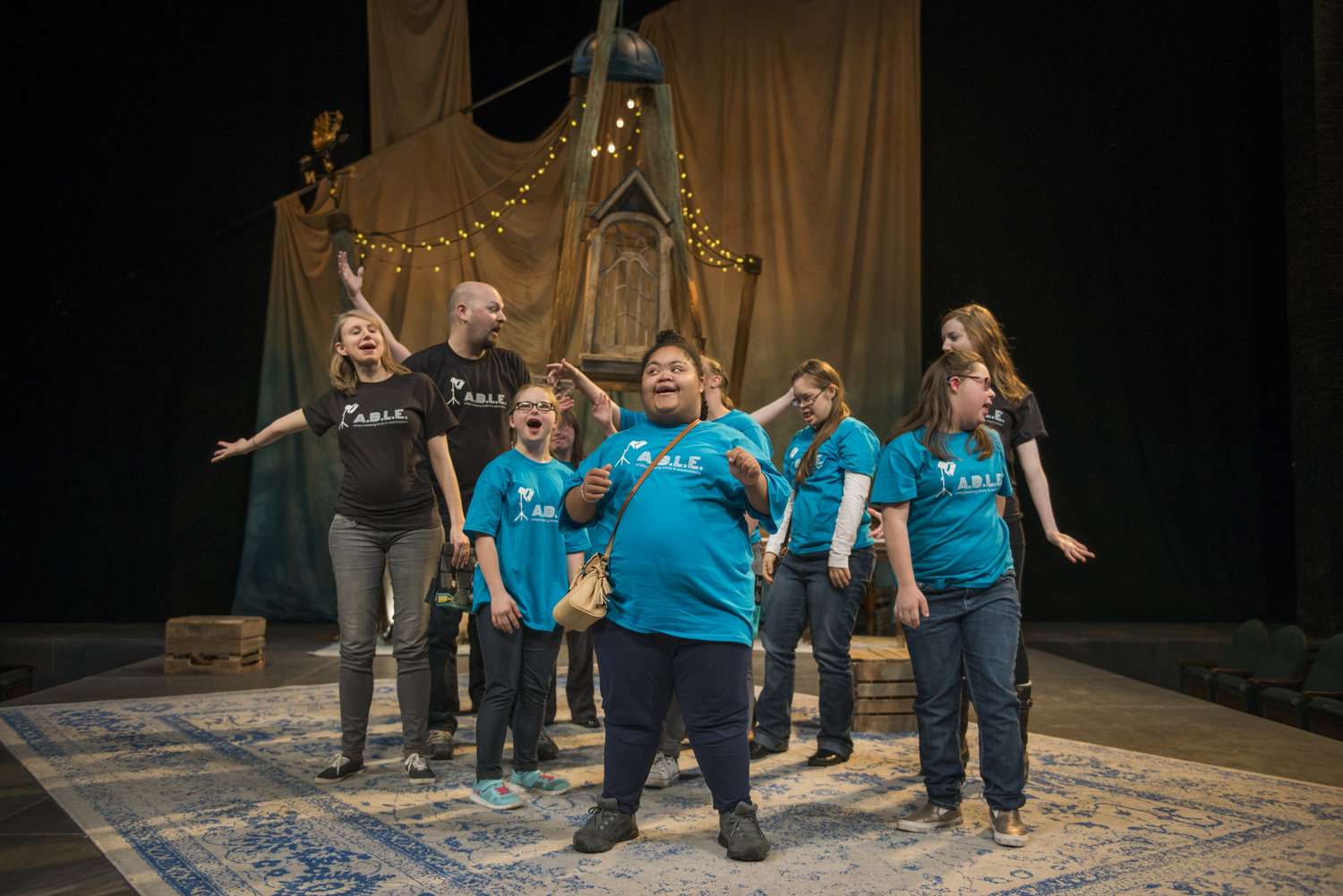
AWF Grantee A.B.L.E. - Artists Breaking Limits & Expectations on launching The Creative Associates initiative
December, 2021
Thanks to an Explore grant from the Arts Work Fund, this year A.B.L.E. - Artists Breaking Limits & Expectations launched our newest initiative - The Creative Associates. Through this program, A.B.L.E.is training 6 of our veteran ensemble members with intellectual and developmental disabilities to work as teaching assistants for our outreach programs and workshops for younger children with disabilities.

Photo by AWeith
You know that picture of the iceberg and how 87% of its mass is under the surface? That’s the same for accessible program design. The past several months have been devoted to developing curriculum and materials that will support the Creative Associates throughout the process - everything from applications, to auditions, to training materials and work shifts. In this post we’ll share a bit about our journey so far.
What’s in a Name?
In our grant application, we called this the Supporting Artist program. As we dug deeper into planning, we started to question this name. “Support” can have a very specific, clinical meaning to those with intellectual and developmental disabilities. We also realized the implied hierarchy of having Teaching Artists and Supporting Artists in our rehearsals and workshops and were concerned that this would devalue their input. Then, in August, we had a planning meeting with our friends at CO/LAB Theater Group in New York. They have hosted a similar program for the past 3 years called CO/LAB Leaders. But they found that many strong candidates don’t apply because they don’t identify as “Leaders” (more on this later). Form talking through their experiences, we realized how powerful a name can be - how it can instantly signal who “belongs” and who doesn’t. So we went back to the drawing board with our name, and, in consultation with A.B.L.E.’s Program Advisory Council, settled on the Creative Associates. We hoped highlighted the professional status but also our key requirement - that you be creative!
Building Trust and Combating Ableism
At A.B.L.E., we believe everyone is A.B.L.E. to connect, to contribute, and to create. In designing the Creative Associates program, it was very important that we create a work environment where everyone could thrive - regardless of things like literacy, short term memory, or communication style. We set application criteria that were based on character and experience more than specific skills:
- Age 22 or older
- Completed at least 2 semesters with ABLE
- Collaborative
- Show initiative
- Responsible
- Upholds A.B.L.E.’s ensemble pact (listen, focus, be respectful, try my best, and have fun)

Despite numerous assurances that this opportunity was truly open to all ensemble members, we saw a lot of hesitancy, particularly from parents and caregivers asking “are you sure she’s right for this?” or “I don’t know if they can do this.” There was especially resistance from the families of our less-verbal participants. Ultimately, out of 25 eligible ensemble members, only 10 applied to join our inaugural cohort of Creative Associates.
We have met similar resistance from new families who join our ensemble program, and express anxiety about their family member with a disability being able to succeed in a performance. People often need to see our ensembles in action to understand and trust us. As much as we have strong intentions, this is a brand new program. People with disabilities have been so excluded from the workspace, they don’t have many leaders to look up to to show them it is possible. The unemployment rate for people with a disability is more than double the rate for those without a disability. According to the latest census, more than 70% of people with disabilities are un/under employed. We have to work against both internalized and systemic ableism to make this program a success.
Accessible Materials for Everyone
The big secret about accessibility is that the accommodations that many people with disabilities need are actually better for everyone. We have created more than 120 pages of new material to support our Creative Associates. All materials are easy read format - using plain language with visual support, color-coding, and larger sans-serif fonts. Our programming team has remarked many times through the planning process “I wish I had something like this” or “ why didn’t we make this before?” Some of our favorites have been:
- A social story for all job applicants with names and photos of who would be in the interview, and notice about the types of questions they should be prepared to answer.
- An activity guide with exercises color coded by learning objectives and skill level to aid with lesson planning choices and create a common vocabulary among all instructors
- Checklists for setting up and cleaning up for sessions
- A workbook with guided exercises to help with planning, leading, and reflecting on sessions One page versions of our key policies and practice guidelines.
What’s Next?
In November 2021, we hosted auditions and selected our inaugural cohort of 6 Creative Associates. They have signed off on their employment agreements and will begin their training program in January 2022 with all of these supports in place. As we get out into our community (in person or over Zoom), we hope that seeing the CA’s in action will challenge preconceptions about what it means to have a disability and who can, and should, be included in leadership positions.
We look forward to sharing more of our learning with all of you! (And if you'd like to book an Outreach or Professional Development session to learn from our Creative Associates, please reach out.)
More Sharing